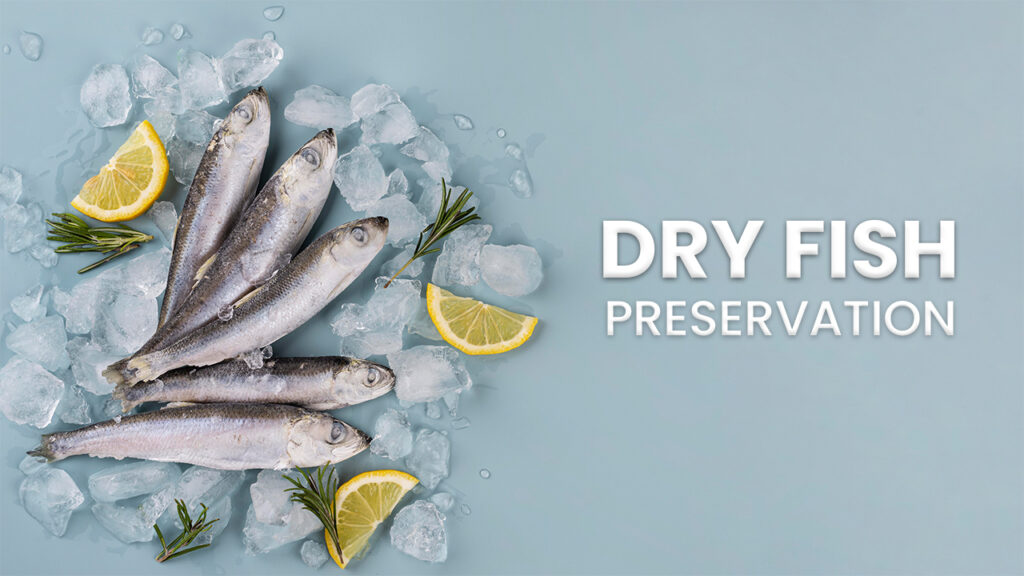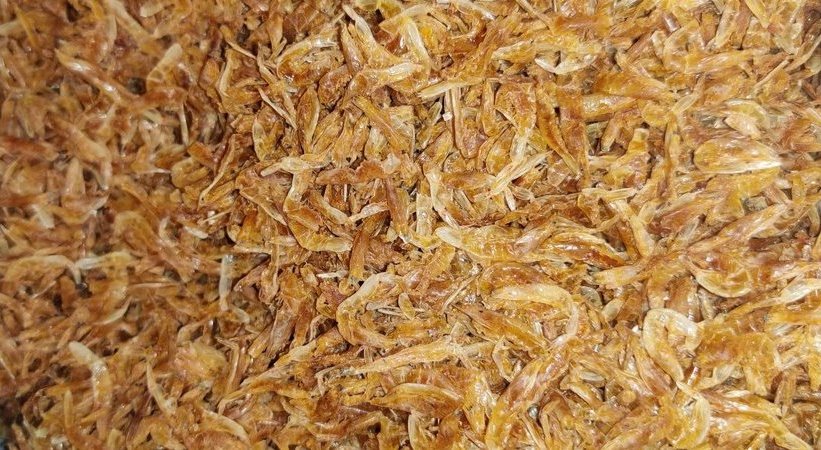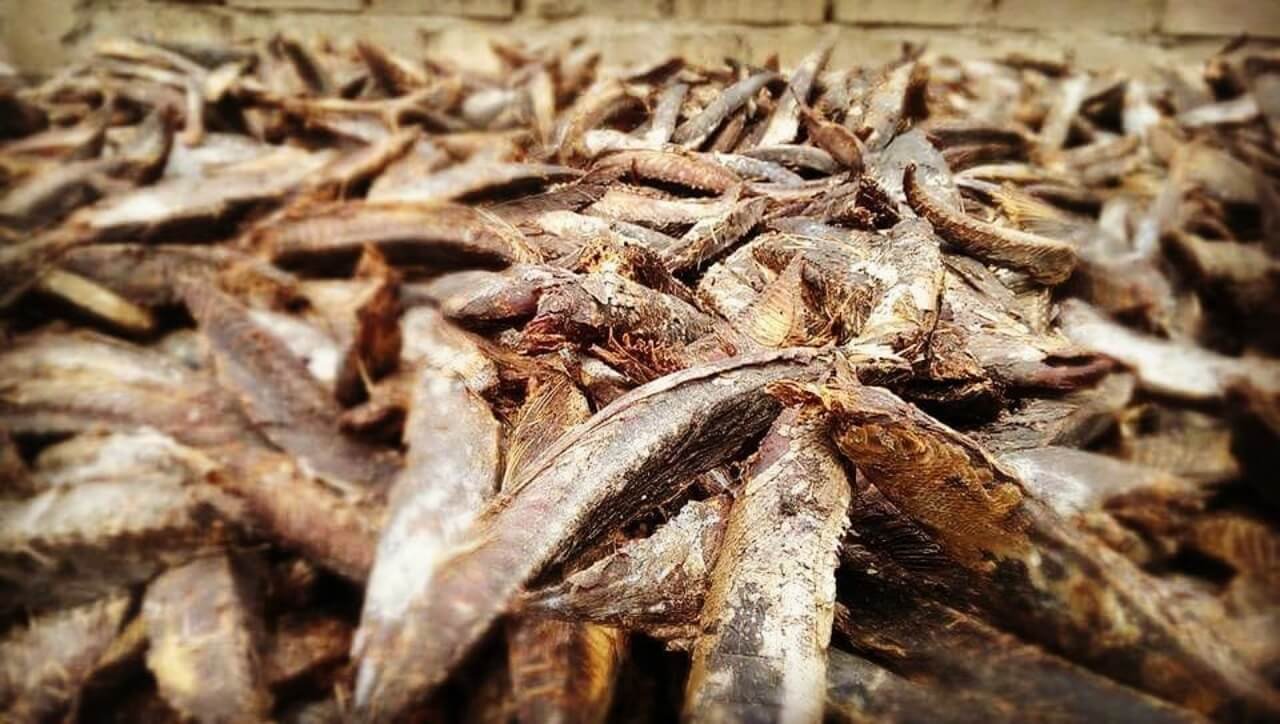
- Post Date: 16 Mar, 2023
Dry Fish Storage and Preservation Methods:

Introduction:
Dry fish is a popular ingredient in many cuisines around the world, prized for its unique flavor and long shelf life. However, storing and preserving dry fish can be challenging, and improper handling can lead to spoilage and food waste. In this blog, we have provided tips and tricks for properly storing and preserving dry fish, as well as creative ideas for using up leftovers in recipes. We have also addressed frequently asked questions and troubleshooting tips to help ensure that your dry fish stays fresh and safe for consumption.
“Importance of Preserving Dry Fish:”
Preserving dry fish is important for several reasons. Firstly, it helps to extend the shelf life of the fish, allowing it to be stored and consumed over a longer period of time. This is particularly important in areas where fresh fish may not be readily available or where it is more expensive to purchase.
Secondly, proper preservation of dry fish helps to maintain its nutritional value and quality. Without proper storage, dry fish can become rancid and lose its flavor, texture, and nutritional benefits. By preserving it correctly, the fish can maintain its taste, texture, and nutritional value for much longer.
Finally, proper preservation also helps to minimize food waste. By keeping dry fish fresh for a longer period of time, consumers can use it in a variety of dishes and recipes, rather than throwing it away when it spoils. Overall, preserving dry fish is important for maintaining its quality and nutritional value, reducing food waste, and making it more accessible and affordable to consumers.
“Tips for storing dry fish in the pantry or kitchen:”
Storing dry fish properly in the pantry or kitchen is essential to maintain its freshness and quality. Here are some tips to help ensure your dry fish stays in good condition:
Keep it in an airtight container: Dry fish is susceptible to moisture, which can cause it to spoil quickly. Store your dry fish in an airtight container to prevent moisture from getting in.
Store in a cool, dry place: Exposure to heat and humidity can also cause dry fish to spoil. Store it in a cool, dry place away from direct sunlight.
Use desiccants: Desiccants like silica gel or activated charcoal can help absorb excess moisture and keep your dry fish fresh. Place a desiccant packet in the container with your dry fish.
Check regularly: Check on your dry fish regularly to ensure it is still fresh. If you notice any signs of spoilage, such as a rancid smell or mold, discard it immediately.
Use it within a reasonable time frame: Even if stored properly, dry fish can still spoil over time. Use it within a reasonable time frame to ensure it is still fresh and safe to eat.
“Seal the Freshness: Why Vacuum-Sealing Dry Fish is a Game Changer”
Vacuum-sealing dry fish is an effective way to extend its shelf life and maintain its quality over a long period of time. By removing all the air from the packaging, the growth of bacteria and mold is minimized, which reduces the risk of spoilage. Vacuum-sealed dry fish can last for months, even up to a year, without losing its flavor, texture, or nutritional value. It also allows for easy storage in the pantry or freezer, as the packaging takes up less space. Vacuum-sealing dry fish is a game changer for those who want to enjoy fresh-tasting dry fish any time of the year.
“Label it Right: Why Proper Labeling and Dating is Key to Safe and Delicious Dry Fish Storage”
Proper labeling and dating of stored dry fish are crucial to ensure its safety and quality. Without proper labeling, it can be difficult to know the type of fish, its storage conditions, and its expiration date. This can lead to confusion and the risk of consuming spoiled fish. Labeling also allows for easy identification and organization of stored dry fish, which can help reduce food waste. Dating the packaging helps to keep track of when the fish was stored and when it should be consumed by, ensuring that it is still safe and fresh to eat. By taking the time to properly label and date stored dry fish, you can have peace of mind knowing that you are consuming safe and delicious fish that is within its recommended storage time frame.
“The Sniff Test: How to Tell if Your Dry Fish is Still Fresh and Safe to Eat”
It’s important to be able to tell if your dry fish has gone bad, as consuming spoiled fish can lead to food poisoning. Here are some signs to look out for:
Foul odor: If your dry fish has a strong, rancid smell, it is likely spoiled and should be discarded.
Discoloration: If the color of your dry fish has changed, it may be a sign of spoilage. Look for any discoloration or spots that may indicate the growth of mold.
Texture: If your dry fish has become soft or mushy, it is likely spoiled and should be discarded.
Taste: If your dry fish tastes off or has a bitter flavor, it is likely spoiled and should not be consumed.
If you notice any of these signs, it is best to err on the side of caution and discard the dry fish. To prevent spoilage, store your dry fish properly and use it within its recommended storage time frame. By following these guidelines, you can enjoy safe and delicious dry fish for longer.
From Leftovers to Delicious Meals: Creative Ways to Use Dry Fish in Recipes
Dry fish can be a versatile ingredient in a variety of recipes, and using up leftovers can help minimize waste. Here are some tips for using leftover dry fish in recipes:
1. Add to soups or stews: Flake leftover dry fish into soups or stews to add flavor and protein.
2. Make fish cakes or patties: Mix leftover dry fish with mashed potatoes and seasonings to make fish cakes or patties.
3. Use in salads: Add leftover dry fish to salads for a protein-packed meal.
4. Make a fish dip or spread: Blend leftover dry fish with cream cheese, sour cream, and seasonings to make a delicious dip or spread.
5. Use in pasta dishes: Flake leftover dry fish into pasta dishes, such as spaghetti carbonara or linguine with clam sauce, for added flavor and texture.
By using up leftover dry fish in these creative ways, you can minimize waste and create delicious meals at the same time. Don’t let your dry fish go to waste – try incorporating it into your next recipe!
Dry Fish Storage: Answers to Your FAQs
Storing and preserving dry fish can be tricky, and many people have questions about the best methods and practices. Here are some frequently asked questions and troubleshooting tips:
1. Can dry fish be stored at room temperature?
Dry fish should be stored in a cool, dry place, away from sunlight and heat. It’s best to store it in the refrigerator or freezer.
2. How long can dry fish be stored?
It depends on the type of fish and the storage conditions. Generally, dry fish can be stored for several months in the refrigerator and up to a year in the freezer.
3. Can I store dry fish in a plastic bag?
It’s best to store dry fish in an airtight container or vacuum-sealed packaging to prevent moisture and air from getting in. Plastic bags can be used, but be sure to squeeze out as much air as possible and seal tightly.
4. How do I know if my dry fish has gone bad?
Check for signs of spoilage, such as a foul odor, discoloration, or a mushy texture. If in doubt, discard it.
Conclusion:
By following the tips and guidelines provided in this blog, you can maximize the freshness and flavor of your dry fish and minimize food waste. Proper storage and labeling, vacuum-sealing, and using up leftovers in creative ways can all help to extend the shelf life of dry fish and make the most of this delicious ingredient. Whether you are a dry fish aficionado or a newcomer to this unique ingredient, we hope that this blog has provided valuable insights and ideas for your culinary endeavors.
Introduction: If you’re a seafood enthusiast or just someone curious about unique culinary experiences, you’ve probably heard about jawla fish. Known …
IntroductionIn today’s world of diverse culinary delights, finding versatile, nutritious, and sustainable ingredients can be a game-changer for your kitchen. …
Introduction Seafood enthusiasts and culinary explorers alike are often drawn to the unique flavours and textures that Maasi Karuvadu offers. This …
Introduction: If you're a seafood enthusiast yearning for a taste of the ocean's bounty, look no further than the exquisite dish …
Nithili Fish Introduction: In the rich tapestry of South Indian cuisine, Nethili Karuvadu emerges as a culinary gem, offering a burst of …
Nethili dry fish, also known as dry nethallu, has long been a staple in South Indian cuisine, offering a burst …
In the vibrant tapestry of culinary experiences, dry salted fish stands as an illustrious ingredient, weaving together a rich history …
Introduction: Welcome to a captivating voyage that transcends the boundaries of time and geography, delving into the briny depths of health …











